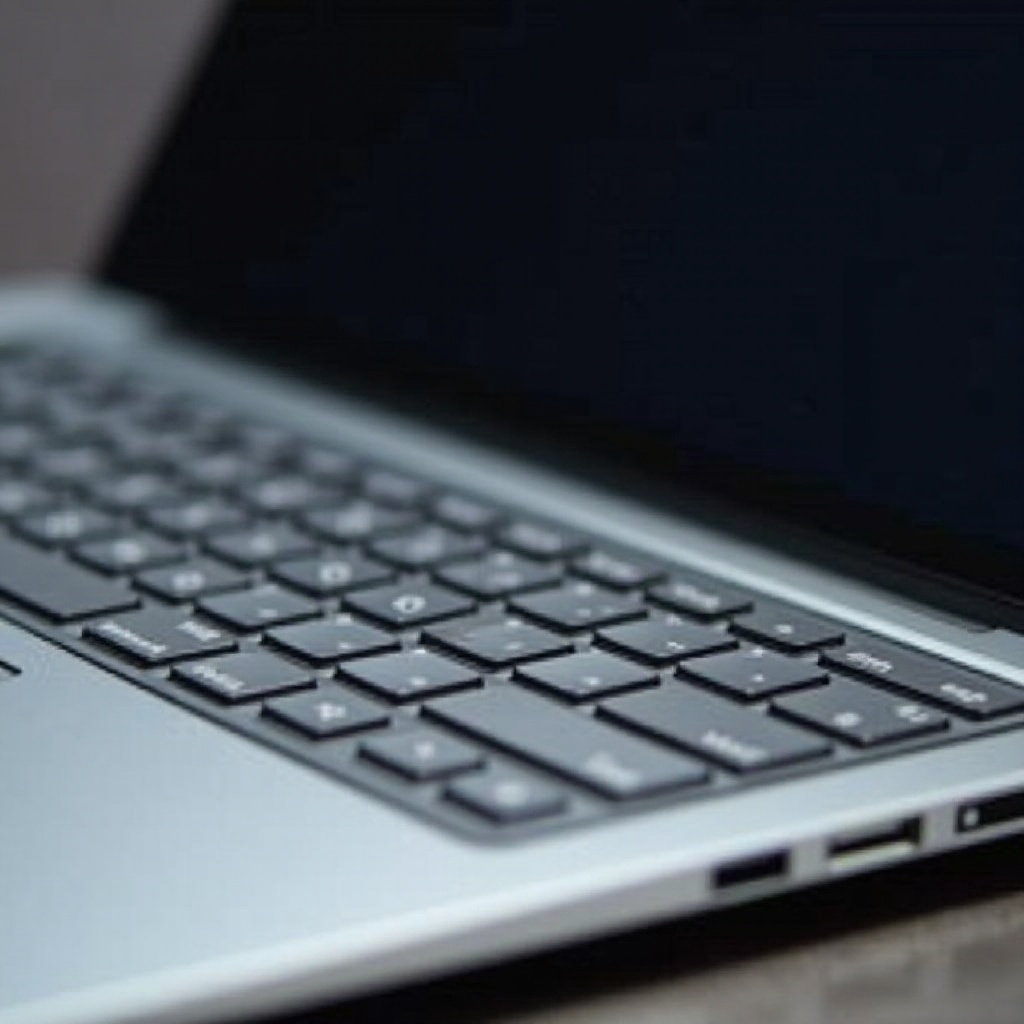Introduction
Laptop users sometimes need to disable keys either to enhance functionality for specific tasks or to prevent accidental inputs. This requirement can arise in scenarios like pausing media keys during a presentation or temporarily disabling the touchpad. By understanding how to efficiently disable keys, users can optimize their experience, ensuring better control and minimizing interruptions. This comprehensive guide explores multiple solutions, from using software to built-in system features and hardware methods. By the end of this article, you’ll have a comprehensive understanding of how to manage key disablement effectively, improving your laptop’s versatility and functionality.

Reasons to Disable Keys on Your Laptop
There can be various motivations for disabling specific keys on a laptop. Preventing unintended keystrokes is a common reason, as unwanted inputs can lead to workflow disruptions or errors. Gamers often disable specific keys that may interfere with gameplay. Others might find certain keys uncomfortable or unnecessary and prefer them inactive. Accessibility is another critical consideration; tailoring keys to meet physical requirements can improve usability. Understanding these reasons helps users decide which keys to disable, thereby maintaining efficiency and minimizing disruptions.

Preliminary Steps Before Disabling Keys
Before proceeding with key disabling, some preliminary steps can help ensure a smooth process. First, identify which keys you wish to deactivate, considering your common tasks and needs. Documenting this list can clarify your objectives. Furthermore, confirm your laptop’s model and operating system, as compatibility with different methods may vary. Conduct a quick online search for software compatibility and take note of your keyboard’s default settings, which aids in reverting configurations in case of errors.

Methods to Disable Keys on a Laptop
There are several methods available for disabling laptop keys, varying from built-in features to external solutions.
Using Built-in Features
Many laptops come with built-in features that allow for temporary key disablement:
- Windows Users: Utilize the “Filter Keys” feature accessible via Control Panel. This helps reduce accidental strokes and allows key customization.
- macOS Users: Adjust the keyboard layout through system preferences to disable particular keys.
- BIOS Settings: Modify key functions directly from your laptop’s startup menu.
These native options allow key disablement without external tools or permanent changes.
Utilizing Third-Party Software
Third-party applications offer another efficient approach to disable keys:
- KeyTweak: This software lets users remap or disable any keyboard key with a straightforward interface.
- SharpKeys: Similar to KeyTweak, SharpKeys offers key functionality alteration or disablement and works well with Windows.
- AutoHotkey: For tech-savvy users, AutoHotkey offers scripting capabilities to manage key inputs, providing control over keyboard configurations.
Using these software options enables extensive customization and flexibility in managing key functions.
Hardware Approach
When software solutions aren’t viable, hardware methods present an alternative:
- Keycap Removal: Carefully remove the keycap, preventing usage.
- Key Blockers: Attach small devices over keys to stop them from being pressed.
- External Keyboard: Connect an external keyboard, giving you control over active keys.
The hardware approach offers temporary disablement, easily reversible as needed.
Re-enabling Keys on Your Laptop
Reverting disabled keys is designed to be simple. If built-in features were used, undo the changes via control panel or system settings. For third-party software, revert configurations to defaults. If hardware solutions were employed, restore the keycaps or remove blockers. Always ensure changes are saved to take immediate effect. User manuals or guides specific to the software or hardware can provide additional information.
Best Practices and Tips
Follow these best practices for effective key disablement. Always back up settings prior to changes, and verify method compatibility with your laptop model. Keep your system updated to avoid software conflicts. Choose reputable third-party programs to ensure safety. Familiarize yourself with the tools to simplify customization and troubleshooting. Continuous learning and adaptation allows efficient key management, meeting your evolving computing needs.
Conclusion
Disabling keys on a laptop is a valuable skill that can adapt your device to specific requirements. Whether preventing accidental key presses or optimizing for gaming, knowing how to do this seamlessly is advantageous. This guide provided diverse methods — built-in features, third-party solutions, and hardware approaches — catering to different preferences and technical capabilities. Remember that re-enabling keys is equally straightforward, ensuring customization flexibility. By adhering to best practices, users can achieve smooth operations, optimize setups, and enjoy a more effective laptop experience.
Frequently Asked Questions
How can I disable the keyboard temporarily?
You can temporarily disable your keyboard using Windows’ filter keys feature, third-party software like AutoHotkey, or by connecting an external keyboard.
Will disabling keys affect my laptop warranty?
Generally, using software to disable keys doesn’t affect warranties as the changes are reversible and do not involve hardware modifications. Check with your warranty provider for details.
Can I disable keys on all laptop brands?
Yes, key disablement is possible across all brands through various methods. However, feature availability and software compatibility may vary. Always check compatibility with your device.